Broccoli & Beef Recipe Chinese Style
Broccoli
Description
Broccoli, Brassica oleracea, is an herbaceous annual or biennial grown for its edible flower heads which are used as a vegetable. The broccoli plant has a thick green stalk, or stem, which gives rise to thick, leathery, oblong leaves which are gray-blue to green in color. The plant produces large branching green flower heads covered with numerous white or yellow flowers. Broccoli can be annual or biennial depending on the variety and can grow to 1 m (3.3 ft) in height. Broccoli may also be referred to as sprouting broccoli and likely originates from the Mediterranean although the exact location has not been determined.

Purple broccoli variety
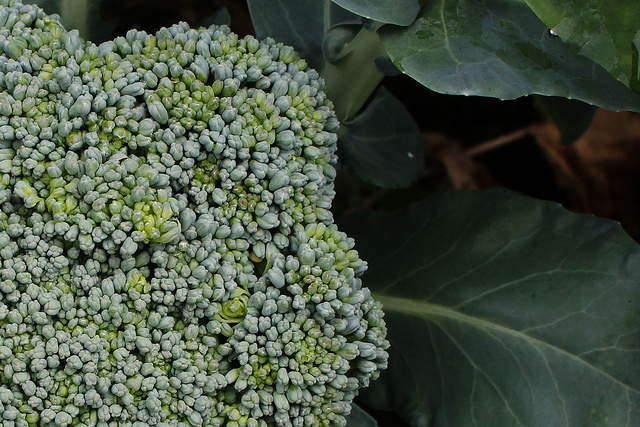
Close-up of broccoli flower head

Broccoli plant
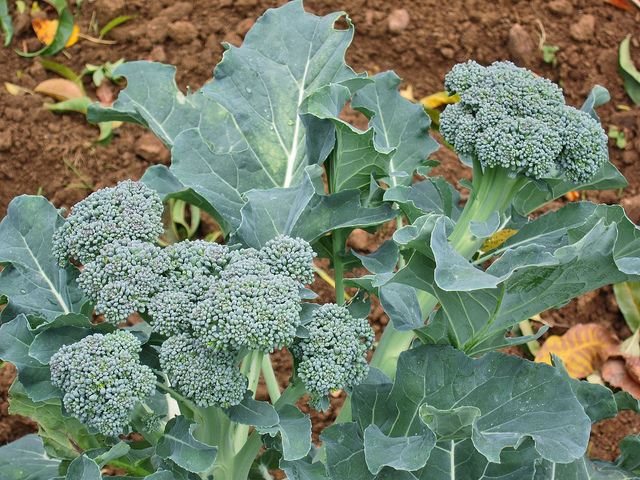
Broccoli side shoots
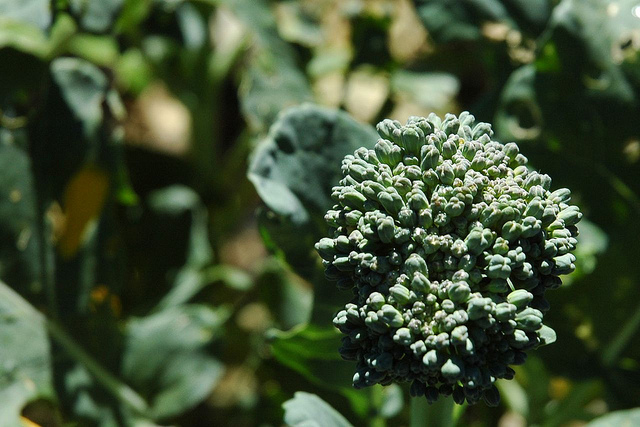
Broccoli head forming

Broccoli
Uses
Broccoli heads are consumed after boiling or fresh in salads. It can be processed for freezing and drying.
Propagation
Basic requirements Broccoli is a cool season crop which can be grown both in spring and in fall. The plants thrive in cool climates and should be planted for fall in areas with hot summers. Broccoli grows best in moist, fertile soil with a slightly acidic pH between between 6.0 and 7.0 and at temperatures between 15.5 and 18°C (60–65°F). Broccoli has a high nitrogen requirement and due to the reduced activity of soil microbes in late fall and winter, organic matter should be added to the soil throughout the year to ensure an adequate supply of nutrients when broccoli is planted. In addition, broccoli requires regular water, especially during drought, to prevent the plants from going to seed. Plant broccoli in full sun to ensure optimum head size. Sowing seeds Broccoli can be direct seeded or started indoors for transplants. Spring plantings should be made 2–3 weeks before the last frost date in your area and Fall plantings should be made approximately 100 days before the first Fall frost. Sow seed 1.3 cm (0.5 in) deep in small groups of 2–3 seeds and about a week after emergence, thin to a final spacing of 30–60 cm (12–24 in) within the row, allowing 90 cm (36 in) between rows. Keep soil evenly moist after planting. If starting indoors, plant seed in peat pots to minimize disturbance to the roots when transplanting. Seedling can be planted outdoors when they are 3–4 weeks old at the same time as seeds are planted using the spacing detailed above. Plant transplants slightly deeper in the ground than they currently are in their pot and keep soil moist to ensure good fertility. General care and maintenance Broccoli has a very shallow root system and cultivating the soil around the plants to remove weeds should be avoided. Provide the plants with adequate and even moisture (about 2 in a week) to keep plants fertile and prevent them from bolting and avoid wetting the flower heads as they develop. Mulching around the plants helps to conserve soil moisture and reduces the soil temperature. Harvesting Broccoli is ready to harvest when the flower buds are firm and packed tightly in the head. Harvest before the buds open by cutting the stalk of the head at a 45° angle about 13–20 cm (5–8 in) below the head. Side-shoots will continue to produce after the first harvest.

Broccoli transplants

Broccoli seedlings
References
CABI Crop Protection Compendium. (2010). Brassica oleracea var. italica datasheet. Available at: http://www.cabi.org/cpc/datasheet/10094. [Accessed 07 November 14]. Paid subscription required. Drost, D. & Johnson, M. (2010). Broccoli in the Garden. Utah State University Cooperative Extension. Available at: https://extension.usu.edu/files/publications/factsheet/HG_Garden_2005-01.pdf. [Accessed 07 November 14]. Free to access. Hardin, N. C. (1996). Growing Broccoli. West Virginia University Cooperative Extension. Available at: http://www.wvu.edu/~exten/infores/pubs/homgardn/broc.pdf. [Accessed 07 November 14]. Free to access. Rimmer, S. R., Shattuck, V. I. Buchwaldt, L. (Eds) (2007). Compendium of Brassica Diseases. American Phytopathological Society Press. Available at: http://www.apsnet.org/apsstore/shopapspress/Pages/42848.aspx. Available for purchase from APS Press.
Common Pests and Diseases
Diseases
Category : Fungal
Alternaria leaf spot Alternaria brassicae

Symptoms of alternaria leaf spot on broccoli leaf

Lesions may also have a chlorotic (yellow) halo around it

All above ground parts of host plants (broccoli in this picture) are susceptible to Alternaria leaf spot.

Lesions may be either round or angular, depending on the leaf veins and shape and site of infection. Some lesions may develop a purplish or black border. Lesions are often concentrically zonate, will develop a target pattern, that will fall out leaving a hole behind.

Symptoms of Alternaria leaf spot begin as small dark spots. These spots will grow and become brown to gray in color
Symptoms
Small dark spots on leaves which turn brown to gray; lesions may be round or angular and may possess a purple-black margin; lesions may form concentric rings, become brittle and crack in center; dark brown elongated lesions may develop on stems and petioles
Cause
Fungus
Comments
Management
Plant only pathogen-free seed; rotate crops; applications of appropriate fungicides control disease when present
Black rot Xanthomonas campestris
Symptoms
Irregularly shaped dull yellow areas along leaf margins which expand to leaf midrib and create a characterstic "V-shaped" lesion; lesions may coalesce along the leaf margin to give plant a scorched appearance
Cause
Bacteria
Comments
Management
Primary method of controlling black rot is through the use of good sanitation practices; rotate crops to non-cruciferous crops every 2 years; plant resistant varieties; control cruciferous weed species which may act as a reservoir for bacteria; plant pathogen-free seed
Clubroot Plasmodiophora brassicae
Symptoms
Slow growing, stunted plants; yellowish leaves which wilt during day and rejuvenate in part at night; swollen, distorted roots; extensive gall formation
Cause
Fungus
Comments
Management
Once the pathogen is present in the soil it can survive for many years, elimination of the pathogen is economically unfeasible; rotating crops generally does not provide effective control; plant only certified seed and avoid field grown transplants unless produced in a fumigated bed; applying lime to the soil can reduce fungus sporulation
Powdery mildew Erysiphe cruciferarum
Symptoms
Small white patches on upper and lower leaf surfaces which may also show purple blotching; patches coalesce to form a dense powdery layer which coats the leaves; leaves become chlorotic and drop from plant
Cause
Fungus
Comments
Management
Plant resistant varieties; rotate crops; remove all crop debris after harvest; remove weeds; avoid excessive application of nitrogen fertilizer which encourages powdery mildew growth; powdery mildew can be controled by application of sulfur sprays, dusts or vapors
Sclerotinia stem rot (White mold) Sclerotinia sclerotiorum

Wind borne spores will land on petals that have fallen onto leaves and stems. These spores colonizes the petals and afterwards will infect the plant itself. Eventually a white fluffy fungal mat can be seen along with sclerotia

If stems become infected they will develop white to grayish lesions. Sclerotia will eventually develop inside of infected stems, and if conditions are wet sclerotia will also develop on the outside of the stems also

The fungus survives in the soil or in crop debris as sclerotia, which act as the primary source of inoculum. Cool moist conditions favor infection.
Symptoms
Irregular, necrotic gray lesions on leaves; white-gray leions on stems; reduced pod set; shattering seed pods
Cause
Fungus
Comments
Management
Rotate crop to non-hosts (e.g. cereals) for at least 3 years; control weeds; avoid dense growth by planting in adequately spaced rows; apply appropriate foliar fungicides
White rust Albugo candida
Symptoms
White pustules on cotyledons, leaves, stems and/or flowers which coalesce to form large areas of infection; leaves may roll and thicken
Cause
Fungus
Comments
Management
Rotate crops; plant only disease-free seed; apply appropriate fungicide if disease becomes a problem
Category : Bacterial
Black leg Phoma lingam
Symptoms
Damping-off of seedlings; round or irregularly shaped gray necrotic lesions on leaves with dark margins; lesions may be covered in pink masses in favorable weather conditions
Cause
Fungus
Comments
Management
Use disease free seed or treat with hot water to remove fungus prior to planting; remove and destroy crop debris after harvest or plow deeply into soil
Category : Fungal, Oomycete
Downy mildew Hyaloperonospora parasitica
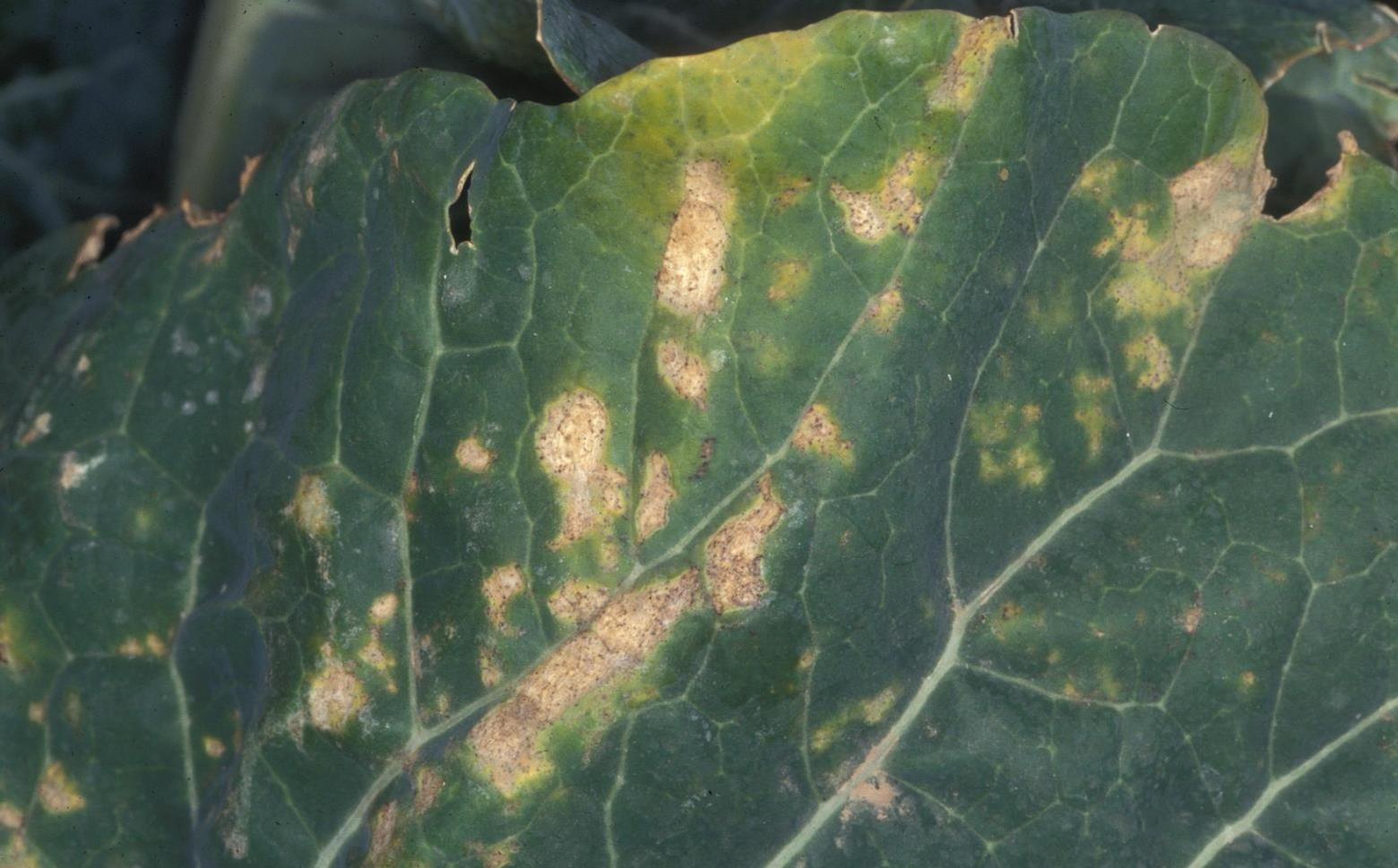
Downy mildew on broccoli leaf
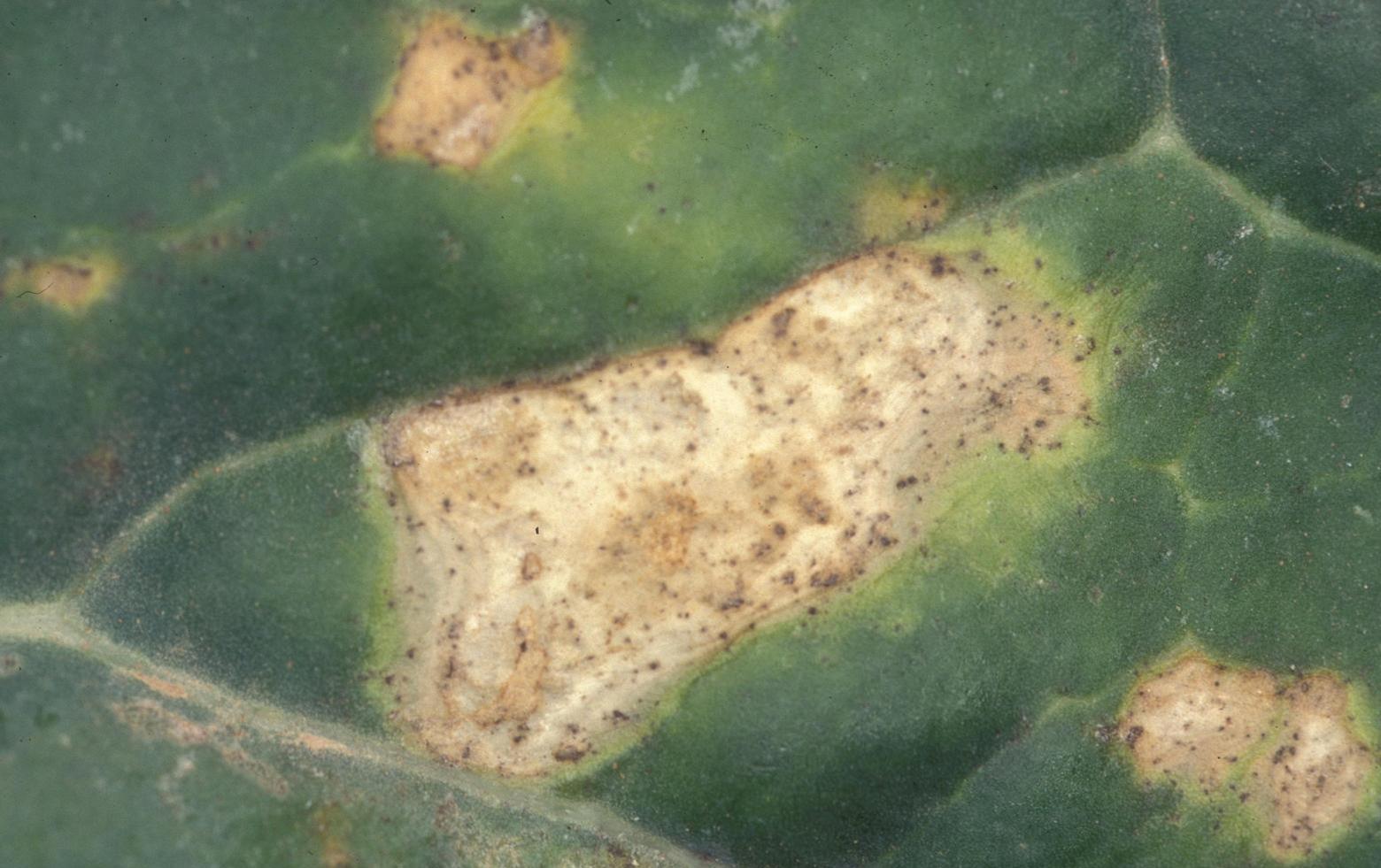
Close-up of downy mildew lesion

Downy mildew symptoms on broccoli leaf
Symptoms
Small angular lesions on upper surface of leaves which enlarge into orange or yellow necrotic patches; white fluffy growth on undersides of leaves
Cause
Fungus
Comments
Management
Remove all crop debris after harvest; rotate with non-brassicas; it is possible to control downy mildew with the application of an appropriate fungicide
Wirestem (Damping-off) Rhizoctonia solani
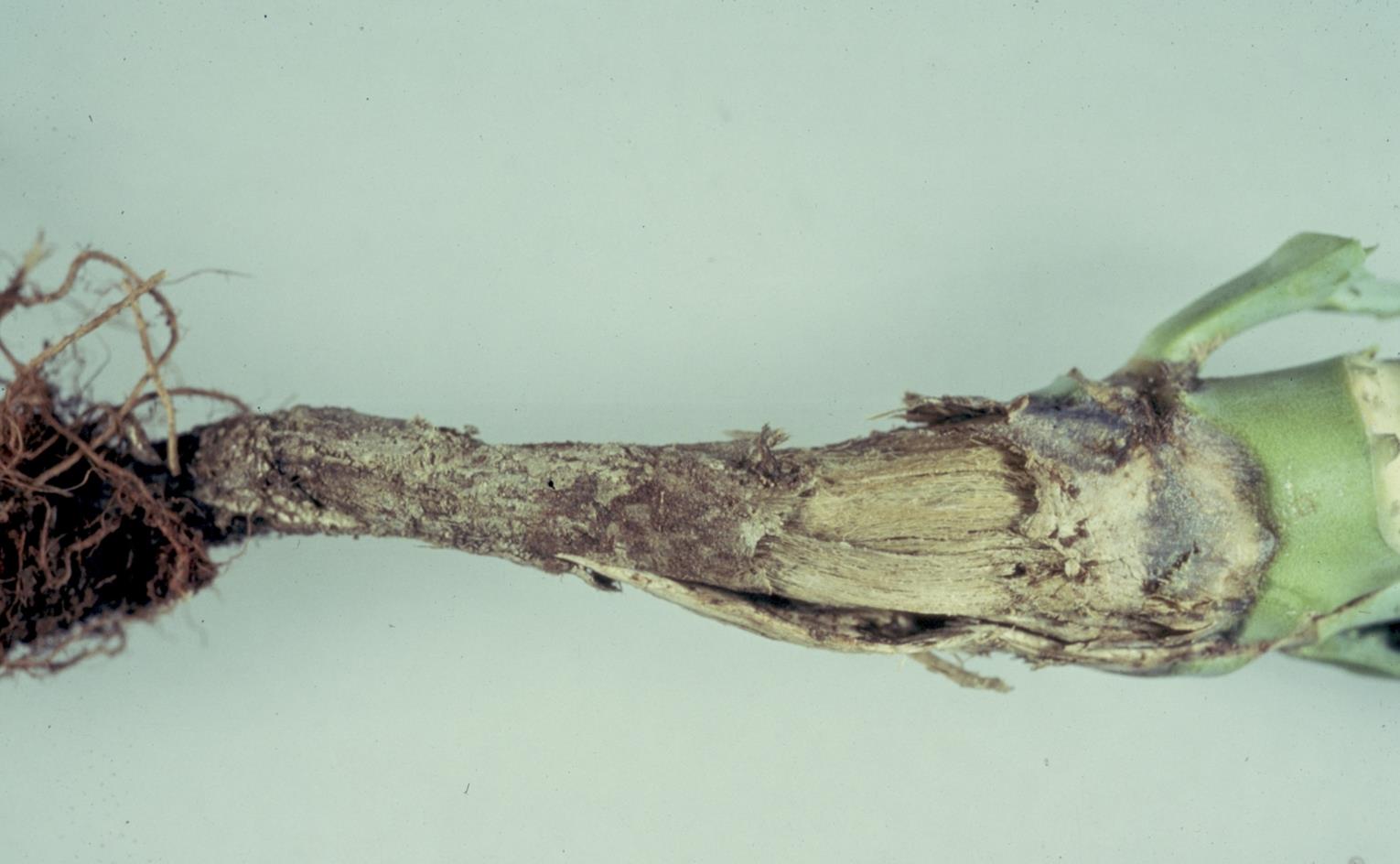
Constricted stem of broccoli seedling caused by damping-off
Symptoms
Death of seedlings after germination; brown-red or black rot girdling stem; seedling may remain upright but stem is constricted and twisted (wirestem)
Cause
Fungus
Comments
Management
Plant pathogen-free seed or transplants that have been produced in sterilized soil; apply fungicide to seed to kill off any fungi; shallow plant seeds or delay planting until soil warms
Category : Viral
Ring spot Mycosphaerella brassicicola
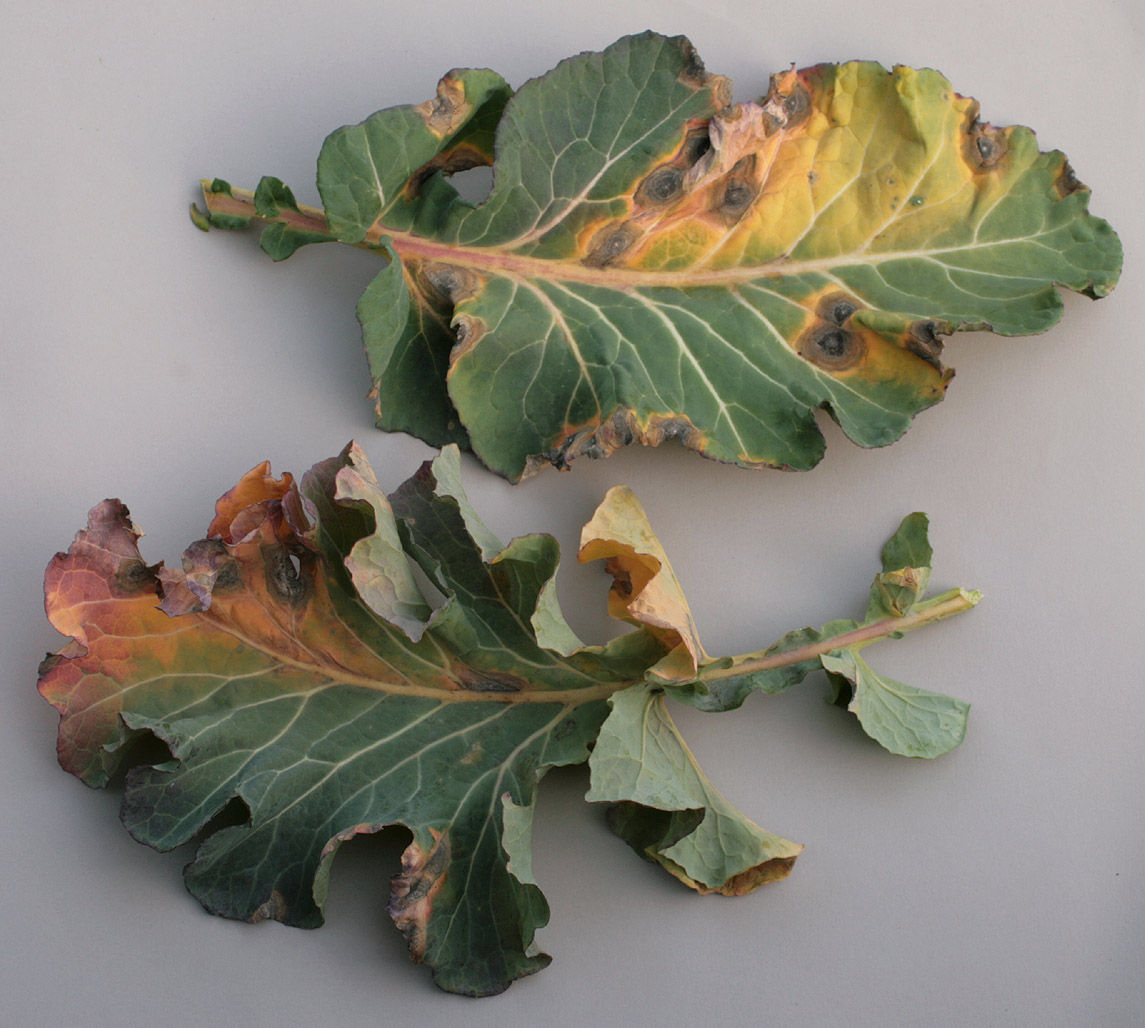
Symptoms on ring spot on broccoli leaves
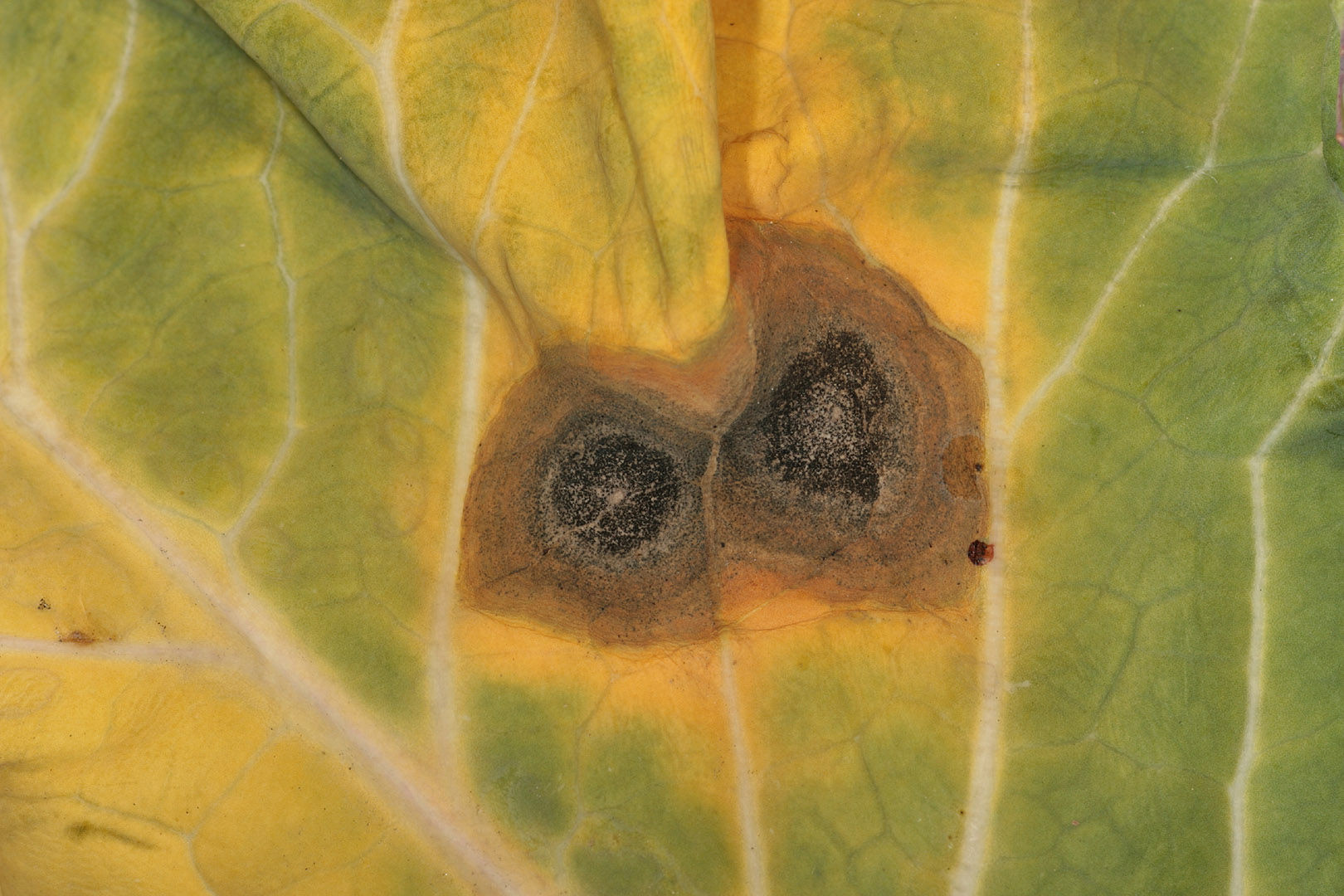
Close-up of ring spot lesions showing concentric pattern
Symptoms
Small, purple spots surrounded by a ring of water-soaked tissue on leaves which mature to brown spots with olive green borders 1-2 cm across; spots may develop numerous fruiting bodies which give them a black appearance or develop a concentric pattern; heavily infected leaves may dry up and curl inwards
Cause
Fungus
Comments
Management
Refrain from planting in areas known to have had disease previously; rotate crop to non-brassicas; sanitize tools and equipment regularly; apply appropriate fungicide if disease is identified in crop
Pests
Category : Insects
Diamondback moth Plutella xylostella

Diamonback moth larva feeding on broccoli leaf
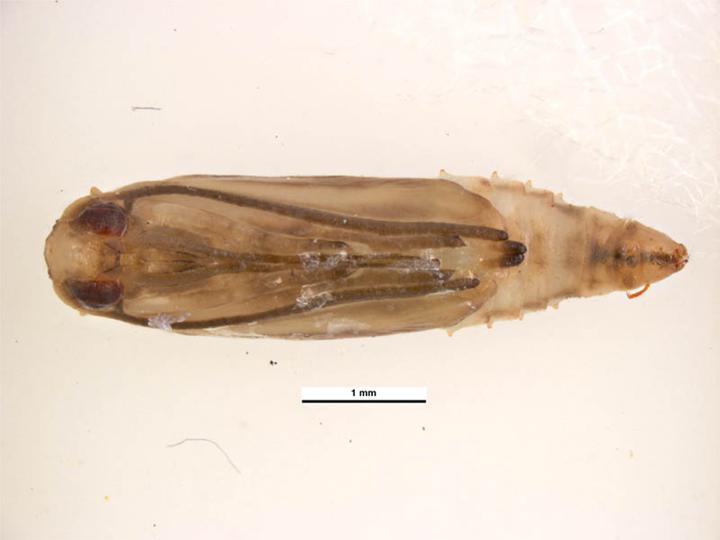
Pupa

Diamonback moth

Larvae
Symptoms
Young larvae feed between upper and lower leaf surface and may be visible when they emerge from small holes on the underside of the leaf; older larvae leave large, irregularly shaped shotholes on leaf undersides, may leave the upper surface intact; larvae may drop from the plant on silk threads if the leaf is disturbed; larvae are small (1 cm/0.3 in) and tapered at both ends; larvae have to prolegs at the rear end that are arranged in a distinctive V-shape
Cause
Insect
Comments
Management
Larvae can be controlled organically by applications of Bacillus thurengiensis or Entrust; application of appropriate chemical insecticide is only necessary if larvae are damaging the growing tips of the plants
Flea beetle (Crucifer flea beetle) Phyllotreta cruciferae

Damage to broccoli leaf caused by Crucifer flea beetle

Flea beetles on broccoli leaf
Symptoms
Small holes or pits in leaves that give the foliage a characteristic "shothole" appearance; young plants and seedlings are particularly susceptible; plant growth may be reduced; if damage is severe the plant may be killed; the pest responsible for the damage is a small (1.5–3.0 mm) dark colored beetle which jumps when disturbed; the beetles are often shiny in appearance
Cause
Insect
Comments
Management
In areas where flea beetles are a problem, floating row covers may have to be used prior to the emergence of the beetles to provide a physical barrier to protect young plants; plant seeds early to allow establishment before the beetles become a problem - mature plants are less susceptible to damage; trap crops may provide a measure of control - cruciferous plants are best; application of a thick layer of mulch may help prevent beetles reaching surface; application on diamotecoeus earth or oils such as neem oil are effective control methods for organic growers; application of insecticides containing carbaryl, spinosad, bifenthrin and permethrin can provide adequate control of beetles for up to a week but will need reapplied
Large cabbage white (Cabbageworm) Pieres rapae
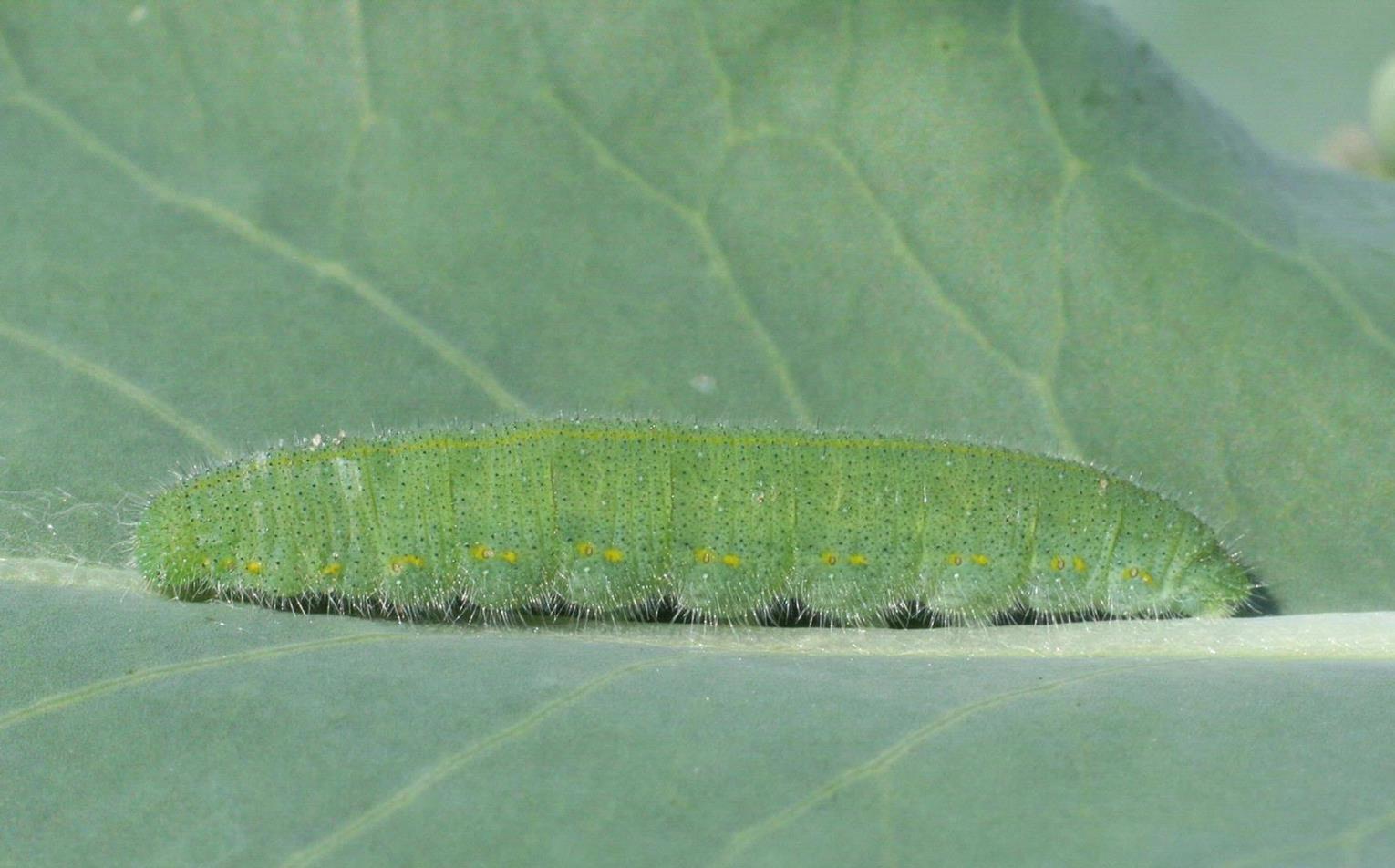
Cabbage white larva on broccoli leaf

Broccoli plant damaged by cabbage white feeding
Symptoms
Large ragged holes in leaves; green-brown frass (insect feces) on leaves; caterpillar is green in color and hairy, with a velvet-like appearance; may have faint yellow to orange stripes down back; slow-moving compared with other caterpillars
Cause
Insect
Comments
Management
Hand pick caterpillars from plants and destroy; scrape eggs from leaves prior to hatching; apply appropriate insecticide if infestation is very heavy
Thrips (Western flower thrips, Onion thrips, etc.) Frankliniella occidentalis
Thrips tabaci

Western flower thrips
Symptoms
If population is high leaves may be distorted; leaves are covered in coarse stippling and may appear silvery; leaves speckled with black feces; insect is small (1.5 mm) and slender and best viewed using a hand lens; adult thrips are pale yellow to light brown and the nymphs are smaller and lighter in color
Cause
Insect
Comments
Management
Avoid planting next to onions, garlic or cereals where very large numbers of thrips can build up; use reflective mulches early in growing season to deter thrips; apply appropriate insecticide if thrips become problematic
Category : Nematodes
Root knot nematode Meloidogyne spp.
Symptoms
Galls on roots which can be up to 3.3 cm (1 in) in diameter but are usually smaller; reduction in plant vigor; yellowing plants which wilt in hot weather
Cause
Nematode
Comments
Management
Plant resistant varieties if nematodes are known to be present in the soil ;check roots of plants mid-season or sooner if symptoms indicate nematodes; solarizing soil can reduce nematode populations in the soil and levels of inoculum of many other pathogens
mcknightasherettle36.blogspot.com
Source: https://plantvillage.psu.edu/topics/broccoli/infos
0 Response to "Broccoli & Beef Recipe Chinese Style"
Post a Comment